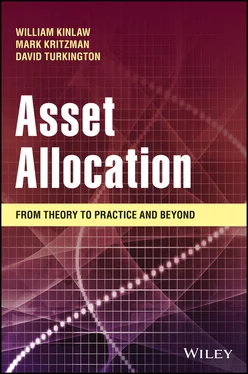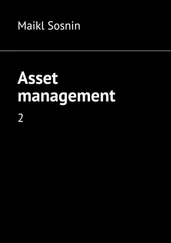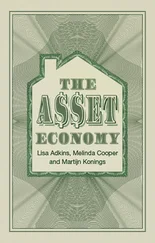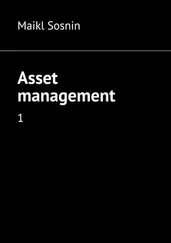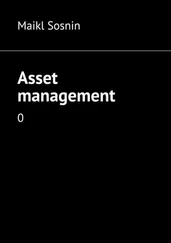1 ...6 7 8 10 11 12 ...18 Investors have access to a vast array of assets with which to form portfolios, ranging from individual securities to broadly diversified funds. The first order of business is to organize this massive opportunity set into a manageable set of choices. If investors stratify their opportunity set at too granular a level, they will struggle to process the mass of information required to make informed decisions. If, instead, they stratify their opportunity set at a level that is too coarse, they will be unable to diversify risk efficiently. Asset classes serve to balance this trade-off between unwieldy granularity and inefficient aggregation.
In light of this trade-off and other considerations, we propose the following definition of an asset class.
An asset class is a stable aggregation of investable units that is internally homogeneous and externally heterogeneous, that when added to a portfolio raises its expected utility without requiring selection skill, and which can be accessed cost-effectively in size .
This definition captures seven essential characteristics of an asset class. Let us consider each one in detail.
The composition of an asset class should be relatively stable. Otherwise, ascertaining its appropriate composition would require continual monitoring and analysis, and maintaining the appropriate composition would necessitate frequent rebalancing. Both efforts could be prohibitively expensive.
Asset classes whose constituents are weighted according to their relative capitalizations are stable, because when their prices change, their relative capitalizations change proportionately. By contrast, a proposed asset class whose constituents are weighted according to attributes that shift through time, such as momentum, value, or size, may not have a sufficiently stable composition to qualify as an asset class. Sufficiency, of course, is an empirical issue. Momentum is less stable than value, which is less stable than size. Therefore, a group of momentum stocks would likely fail to qualify as an asset class, while stocks within a certain capitalization range might warrant status as an asset class. Value stocks reside somewhere near the center of the stability spectrum and may or may not qualify as an asset class.
The underlying components of an asset class should be directly investable. If they are not directly investable, such as economic variables, then the investor would need to identify a set of replicating securities that tracks the economic variable. Replication poses two challenges. First, in addition to the uncertainty surrounding the out-of-sample behavior of the economic variable itself, the investor is exposed to the uncertainty of the mapping coefficients that define the association between the economic variable and the replicating securities. Second, because the optimal composition of the replicating securities changes through time, the investor is exposed to additional rebalancing costs.
The components within an asset class should be similar to each other. If they are not, the investor imposes an implicit constraint that two or more distinct groupings within the proposed asset class must be held according to their weights within the asset class. There is nothing to ensure that the weights of distinct groupings within a larger group are efficient. If the proposed asset class is disaggregated into distinct groupings, the investor is free to weight them for maximum efficiency.
Consider, for example, global equities. Domestic equities may behave very differently from foreign equities, and developed market foreign equities may behave differently from emerging market equities. Investors may be able to form a more efficient portfolio by disentangling these equity markets and weighting them based on their respective contributions to a portfolio's expected utility, as opposed to fixing their weights as they appear in a broad global index. Not only might the optimal weights of these components shift relative to each other, but the optimal allocation to equities as a whole might shift up or down relative to the allocation that would occur if they were treated as a unified asset class.
Each asset class should be sufficiently dissimilar from the other asset classes in a portfolio as well as linear combinations of other asset classes. If the asset classes are too similar to each other, their redundancy will force the investor to expend unnecessary resources analyzing their expected return and risk properties and searching for the most effective way to invest in them.
In Chapter 2, we build portfolios from seven asset classes: US equities, foreign developed market equities, emerging market equities, Treasury bonds, corporate bonds, commodities, and cash equivalents. We considered including intermediate-term bonds as well. However, the lowest possible tracking error of a portfolio composed of these asset classes with intermediate-term bonds is only 1.1%. Intermediate-term bonds are, therefore, redundant. The lowest possible tracking error with commodities, by contrast, is 19.5%; hence, we include commodities in our menu of asset classes. Although there is no generically correct tracking error threshold to determine sufficient independence, within the context of a particular group of potential asset classes the answer is usually apparent.
The addition of an asset class to a portfolio should raise the portfolio's expected utility. This could occur in two ways. First, inclusion of the asset class could increase the portfolio's expected return. Second, its inclusion could lower the portfolio's risk, either because its own risk is low or because it has low correlations with other asset classes in the portfolio.
The expected return and risk properties of an asset class should not be judged only according to their average values across a range of market regimes. A particular asset class such as commodities, for example, might have a relatively low expected return and high risk on average across shifting market regimes, but during periods of high financial turbulence could provide exceptional diversification against financial assets. Given a utility function that exhibits extreme aversion to large losses, which typically occur during periods of financial turbulence, commodities could indeed raise a portfolio's expected utility despite having unexceptional expected return and risk properties on average.
It might occur to you that in order to raise a portfolio's expected utility, an asset class must be externally heterogeneous. This is true. It does not follow, however, that all externally heterogeneous asset classes raise expected utility. An asset class could be externally heterogeneous, but its expected return may be too low or its risk too high to raise a portfolio's expected utility. Therefore, we could have omitted the criterion of external heterogeneity because it is subsumed within the notion of expected utility. Nevertheless, we think it is helpful to address the notion of external heterogeneity explicitly.
An asset class should not require an asset allocator to be skillful in identifying superior investment managers in order to raise a portfolio's expected utility. An asset class should raise expected utility even if the asset allocator randomly selects investment managers within the asset class or accesses the asset class passively. Not all investors have selection skill, but this limitation should not disqualify them from engaging in asset allocation.
Think about private equity funds, which are actively managed. Early research concluded that only top-quartile private equity funds earned a premium over public equity funds. 1 If this were to be the case going forward, private equity would not qualify as an asset class, because it is doubtful that the average asset allocator could reliably identify top-quartile funds prospectively, much less gain access to them. More recent research, however, shows that private equity funds, on average from 1997 through 2014, outperformed public equity funds by more than 5% annually net of fees. 2 If we expect this level of performance to persist, private equity would qualify as an asset class, because an asset allocator who is unskilled at manager selection could randomly select a group of private equity funds and expect to increase a portfolio's utility.
Читать дальше
